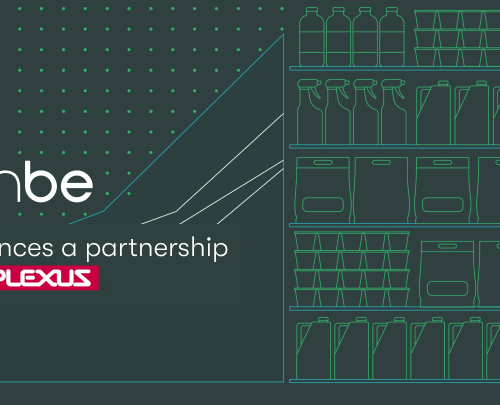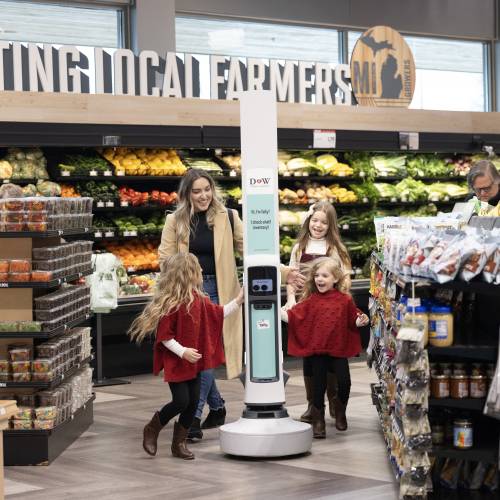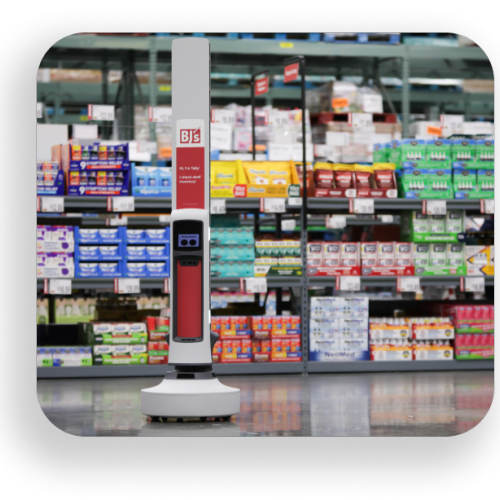
Customer attrition, labor shortages, shrink, and supply chain disruptions are common challenges that retailers face every day – impacting revenue, staff retention, compliance, and more.
But retailers are nothing if not resilient at finding new solutions.
That’s why so many market leaders in grocery, liquor, wholesale, and apparel use technology that automates manual audits and inventory scans.
What these industry role models recognize about inventory scans is that…
1. Manual audit scans take staff time away from shoppers.
The more things change, the more they stay the same. As they always have, shoppers still love to purchase from brick & mortar retail locations where they receive the most high-quality service.
Store teams that automate inventory scans with robotics and AI solutions no longer have to roam the aisles in search of low, out-of-stock, and mispriced items for hours each week. In fact, users of store intelligence™ spend up to 50 more hours per week with customers!
2. Inventory scans are a top reason retail workers quit their jobs.
There’s also the fact that serving shoppers is one of the main reasons that retail associates get into their line of work in the first place. Is it any surprise, then, that store teams with a lot of monotonous and boring tasks are more likely to quit their jobs? Bloomberg reports that today’s 90% attrition rate for hourly retail workers is fueled by such repetitive, manual work.
In contrast, retail workers who don’t have to do manual audits (and can instead rely on AI and automation to surface OOS items and price & promotion errors) are much happier. As Schnuck Markets’ Vice President of Store Operations Kim Anderson said in conversation with Omni Talk Retail, “If we tried to take Tally away from our teams, we wouldn’t even make it to the door!”
3. Manual audits cause eCommerce friction.
It’s frustrating for shoppers and store workers alike when items listed to be available online aren’t actually findable in the store. In fact, one McKinsey study found that over 50% of items ordered online are either substituted or not found. What’s perhaps even more surprising, however, is that more than half of those allegedly OOS items are actually somewhere in the store or back room. The in-store fulfillment teams just don’t know where to look! (Simbe data)
That’s why retailers using store intelligence platforms enjoy the following benefits:
Better online inventory accuracy
More accurate fulfillment rates
Improved fulfillment efficiency
Such platforms streamline inventory management and guide fulfillment teams with optimized pick lists for unique orders. One team improved fulfillment efficiency by 30%!
4. Inventory scans are why shoppers don’t buy as much as they would
When shoppers don’t see the items they want, they can’t buy them. It’s as simple as that. As mentioned above, however, Simbe’s data have educated retail customers across the US, EMEA, and Asia that more than half (60%) of the time shoppers think items aren’t available, they’re simply somewhere else in the store.
Stores that empower their store teams with store intelligence dramatically improve their addressable OOS rates. One company even boasts a 10% addressable OOS rate, which is one-third of the industry average!
Such grocers and retailers sell more items more often because their shoppers can find items they want to buy.
5. Manual audits are why consumers start shopping elsewhere
SInce 2020, more than half of shoppers have stopped going to their preferred local store because items haven’t been available too many times.
Grocers who use store intelligence technology enjoy customer loyalty because they ensure that products that are in stock are in sight for purchase.
To learn more about unlocking store revenue in plain sight, schedule a demo of Simbe’s Store Inteligence platform today.




